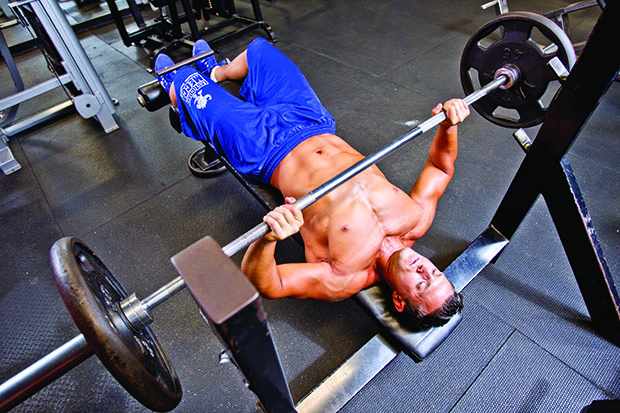

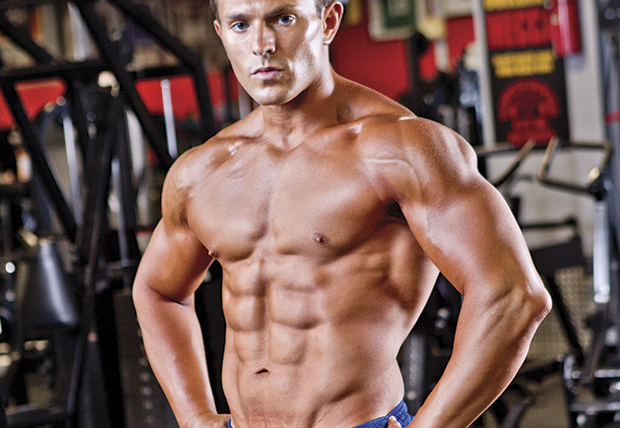
Use the best compound exercises in one workout to build muscle and burn fat at the same time.
With so many training disciplines out there, it’s easy to get lost in the shuffle. Olympic weightlifting has grown in popularity, and now you can find ordinary joes in practically every gym doing snatches, cleans and split jerks in their training regimens. Gymnastic-type movements have also become popular, and now handstands and muscle-ups are being included in daily workout programs. All of these styles of training have boatloads of advantages and should be included into your training program depending on your goals and health.
Yet with many different modes of training being introduced or reintroduced to the fitness world, sometimes we forget about the mainstays. The “Big 3” lifts (squats, bench presses, deadlifts) are, in my opinion, tried-and-true exercises that will always test a man’s strength, power, and determination. They are the king of all exercises regardless of what new training technique is implemented in the fitness arena.

Back Squat: The basic squatting movement should be programmed into anyone’s training program, whether they are an athlete, training for health reasons, or even someone recovering from a major injury. Squats are a fundamental movement that everyone should master. The advanced version of squats is the barbell back squat. When done correctly, back squats not only increase leg strength, but also improve trunk stability, upper-body strength, athletic performance, and mental fortitude.
The Mother of All Exercises is not easy for everyone to perform. Due to different limb lengths and body mechanics, some people have problems squatting correctly and to the proper depth. That said, people should have the bare-bones mobility and skill to squat to where their thighs become parallel to the floor. (I have personally trained a seven-foot-tall basketball player who was able to do a perfect back squat without putting himself in harm’s way.) When you start to introduce back squats into your program, make it a goal to eventually lift at least 1.5 times your bodyweight. Anything over that number is a great achievement.

Bench Press: The standard barbell bench press is the king of all upper-body lifts. Most people believe the bench works only your chest and arms. When done correctly using the most effective technique, however, bench pressing stimulates the musculature of your chest, shoulders, triceps, back, and even your legs. If you learn to bench properly, you can use your legs to press more weight. Pushing through your lower body and hips helps solidify your base, tightens your torso, and thereby allows you to press more weight. And if you are able to bench more weight, you increase the strain placed on your chest and your other primary muscle groups being used—which leads to great upper-body development. For the bench press, you should be able to bench your bodyweight for a few reps, but working up to 1.5 times your bodyweight and eventually more than that as a one-rep max is definitely a prideful accomplishment.
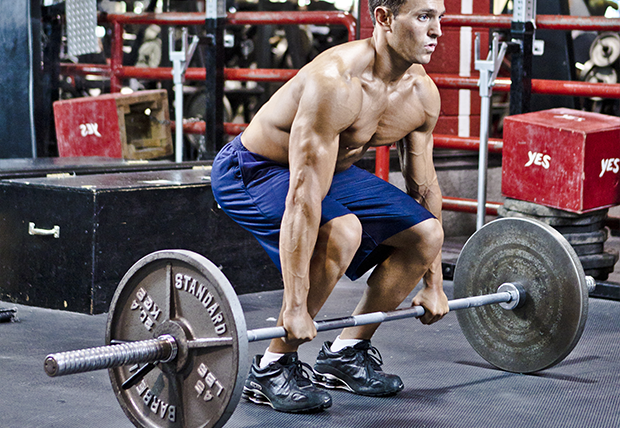
Deadlift: Both a gift and a curse, deadlifts are often handled fairly well by smaller people since you’re technically not supporting the weight but pulling it from the floor. It’s also a lift where you see people making considerable gains fairly early when they’re added to a training program. Once you master the proper technique, aim for deadlifting at least twice your bodyweight for maximal effort. If you keep training hard and include some smart accessory exercises (glute ham raises, Romanian deadlifts, hip thrusts), you can add weight to the bar fairly rapidly.
The Workout
This workout combines the Big 3 lifts into a smart and manageable circuit-training routine. For best results, you will need three barbells: one loaded on a bench, one on the floor, and another in a squat rack. This could be difficult in a crowded gym, but do your best. (And don’t do this workout in your commercial gym at 6:00 p.m. on a Monday.) Set everything up by putting your belt or water bottle on or around the equipment you’re saving and get moving. After all, if you do this quickly enough (as a circuit should be conducted), you won’t keep the equipment all day.
Load each bar with your bodyweight and perform the below workout. Take no rest time between exercises. Pause just long enough to move from one station to the next. At the end of each circuit, recover for 60 seconds and repeat. Complete up to 10 rounds of the following:
• 3 reps of Bench Press
• 6 reps of Back Squat
• 9 reps of Deadlift
The rep scheme should allow you to finish the workout without changing the weights. People who suffer in a certain lift may find one or more of the Big 3 exercises difficult to handle, but if you have a decent base of strength, you should be able to soldier through. Go ahead and break the set if you hit failure, but perform all the reps. This workout is a great finisher to your already programmed workout of the day (but cut it back to just a few circuits). And if you’re short on time, this workout will get you in and out of the gym quickly, while blasting a ton of muscle fibers and really making you sweat.
Squats, benches, and deadlifts are guaranteed to produce results when done properly and if you have no prior health issues. If you combine these with the scientific results that circuit training produces, you have a recipe for muscle-building and fat-burning success.
Cornell Hunt is a Certified Strength & Conditioning Specialist who trains athletes in Fairfield, New Jersey, and is the Xtreme Trainer for MHP. For more information, visit MHPStrong.com or HuntForStrength.com.














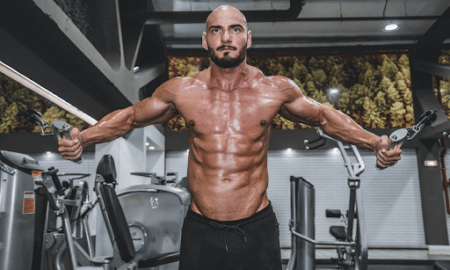


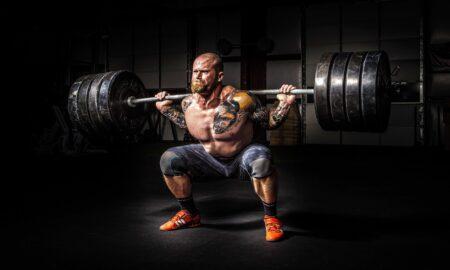
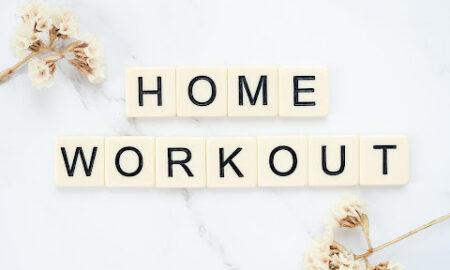



You must be logged in to post a comment Login